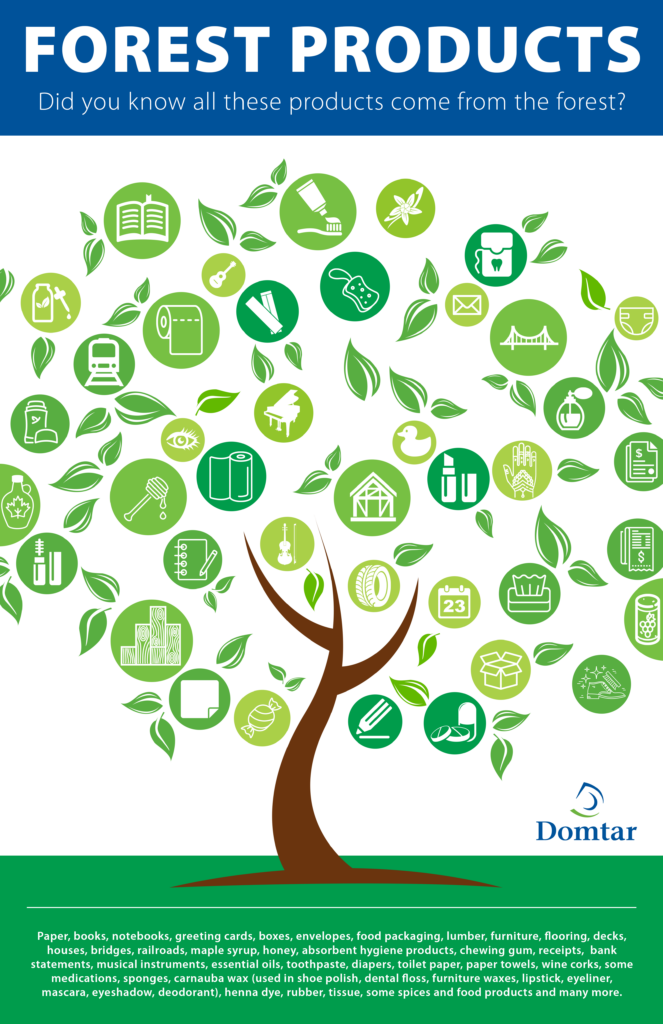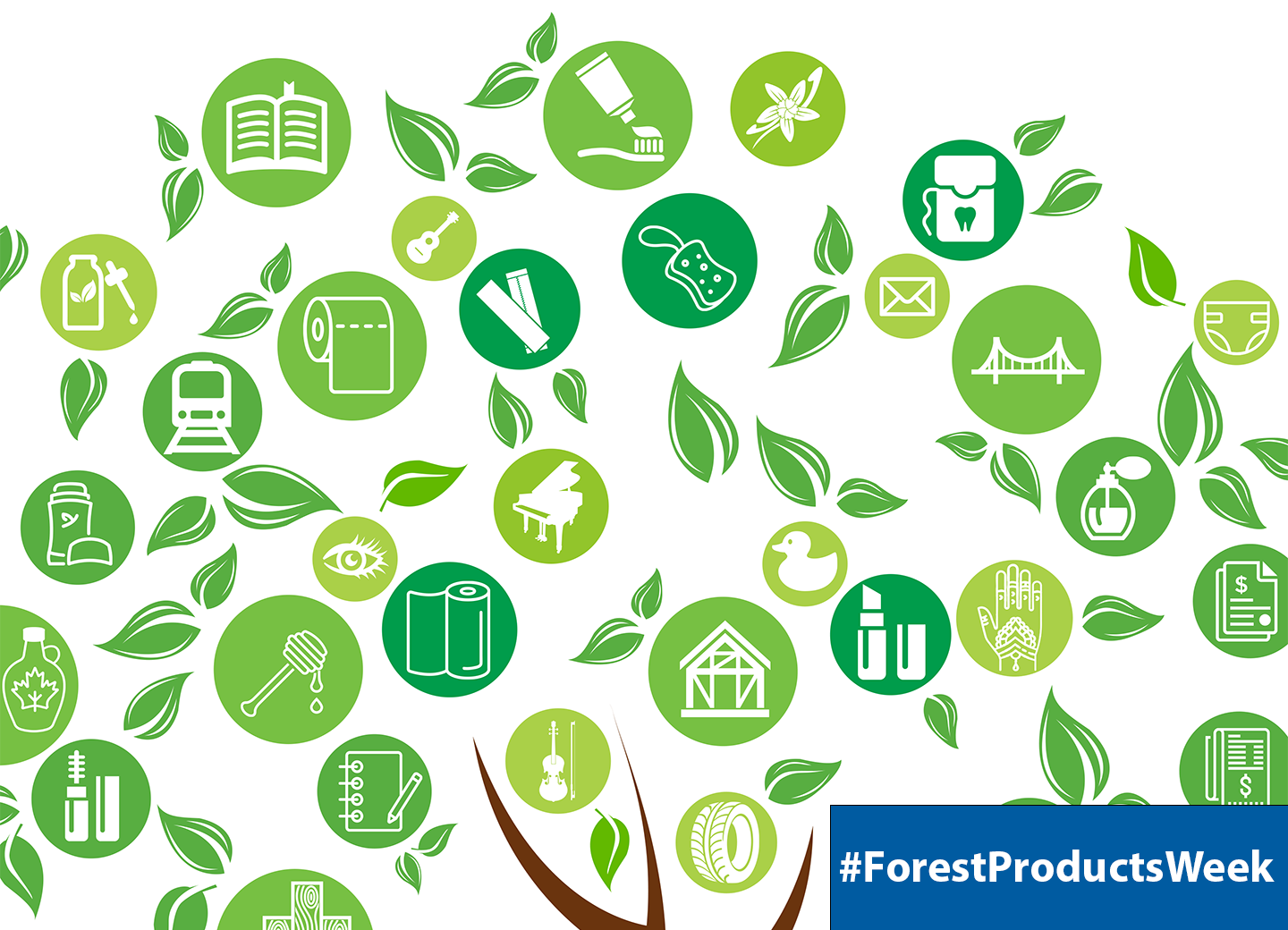It’s National Forest Products Week in the United States — a prime opportunity to learn just how important our forests are to everyday life.
Chances are, you use more forest products every day than you’ve ever recognized. Now’s a good time to look around. Goods that come from the woods make our lives easier and more comfortable. Forest products give us shelter, keep us warm, promote good hygiene and make our lives more beautiful.
Let’s celebrate National Forest Products Week by highlighting five facts about forest products.
5 Facts About Forest Products
1. Everyone benefits from forest products. From paper towels and toilet paper to the lumber that was used to build your home and the chair you sit on, as well as the wax used to add some shine your car and your lips — forest products enhance our modern lives.
In recognition of National Forest Products Week, we asked our colleagues about their favorite forest products. Paper — in the form of books, toilet paper, paper towels, construction paper, posters, grocery bags and coffee cups — was the top response, with others adding lumber, building materials and honey.
Speaking of sweet stuff: The forests around our Windsor Mill have produced more than 165,000 gallons of maple syrup over the past five years.
2. Many forest products, including paper and paper-based packaging, can be recycled into new products multiple times, offering greater sustainability for our planet.
3. The United States has more forestland now than 40 years ago. More than one billion trees are planted here every year. And of the more than 3 trillion trees on the planet, 288 billion are in the U.S, due in part to the fact that the paper and packaging industry plants twice as many trees as it uses.
4. The forest products industry uses all parts of a tree to make different products. Pulpwood quality material comes from the section near the top of the tree. Average-quality wood, used to make pallets and flooring, is next, followed by high-quality wood used to make hardwood lumber like two-by-fours. The base of the tree is very high-quality wood, which can be made into veneer to face doors and furniture. Byproducts such as wood chips, leaves and black liquor are used as biomass to generate renewable energy.
5. While many forest products have been around for centuries, Domtar and the forest products industry continue to innovate. New technologies developed over the past few years include our paper freezer pack technology and stretchable paper for bags. Other organizations have developed shelf-stable food packaging, paper-based cooler technology, bacteria-resistant paper and even RFID technology that can be integrated into luggage tags and travel documents. Our industry is learning more about sustainability every day, and we’re using what we learn to be better stewards of our environment.
What’s your favorite good from the woods? During National Forest Products Week, take a look at this infographic for inspiration, and tell us about your favorite forest product.

Photo: Domtar
